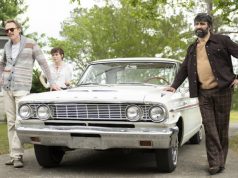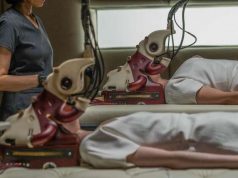Beverly Peterson’s documentary “Invisible Revolution” presents an objective, “60 Minutes”-style report on racist and anti-racist factions in America. There is little of the director’s own personality or opinions — her voice-over narration even sounds detached — and that’s probably a good thing. The racist groups come off as so ridiculous, one would be inclined to think Peterson rigged it that way on purpose.
Some interesting characters cross the screen. First there’s Ben Smith, an Indiana college student and ambitious proponent of the World Church of the Creator. His racist literature — distributed in an affluent suburb along his paper route — rankles the mayor, among others, and no one can understand how a boy with his upbringing turned out that way.
More unsettling is James Roesch, an 18-year-old who becomes Grand Dragon of the Ku Klux Klan in Ohio. He seems a fairly intelligent youth, all things considered, and he’s certainly a good leader for a group that relies so heavily on leadership. The film documents his and April’s KKK wedding, complete with formal robes. At the end — this is absolutely true — everyone at the wedding shoots guns in the air and yells, “White power!” Here comes the bride, and heil Hitler!
If KKK members ever realize how ridiculous they look, it will be the downfall of the Klan. Never mind their ideology; it’s their behavior that’s the most blatantly goofy.
Somewhat less stupid in its tactics but no less zealous is the Anti-Racist Action group. The ARA is just what it sounds like, also attracting angry young people in search of a cause, only this one is dedicated to fighting groups like the Klan. They’re just as inclined to be furiously emotional during public rallies as the KKK is; in fact, it’s good that the film labels each interview subject as “KKK” or “ARA,” because it’s often hard to tell them apart. Members of either group have a propensity toward tattoos and short hair, and someone talking about having been shot or stabbed could be on either side.
Which, of course, is some of the documentary’s fascinating appeal — the idea that groups with completely opposite ideas could be so similar in their tactics. No real solutions are given, but both sides of the issue are examined with unflinching sociology-lesson honesty.
A- (; )





